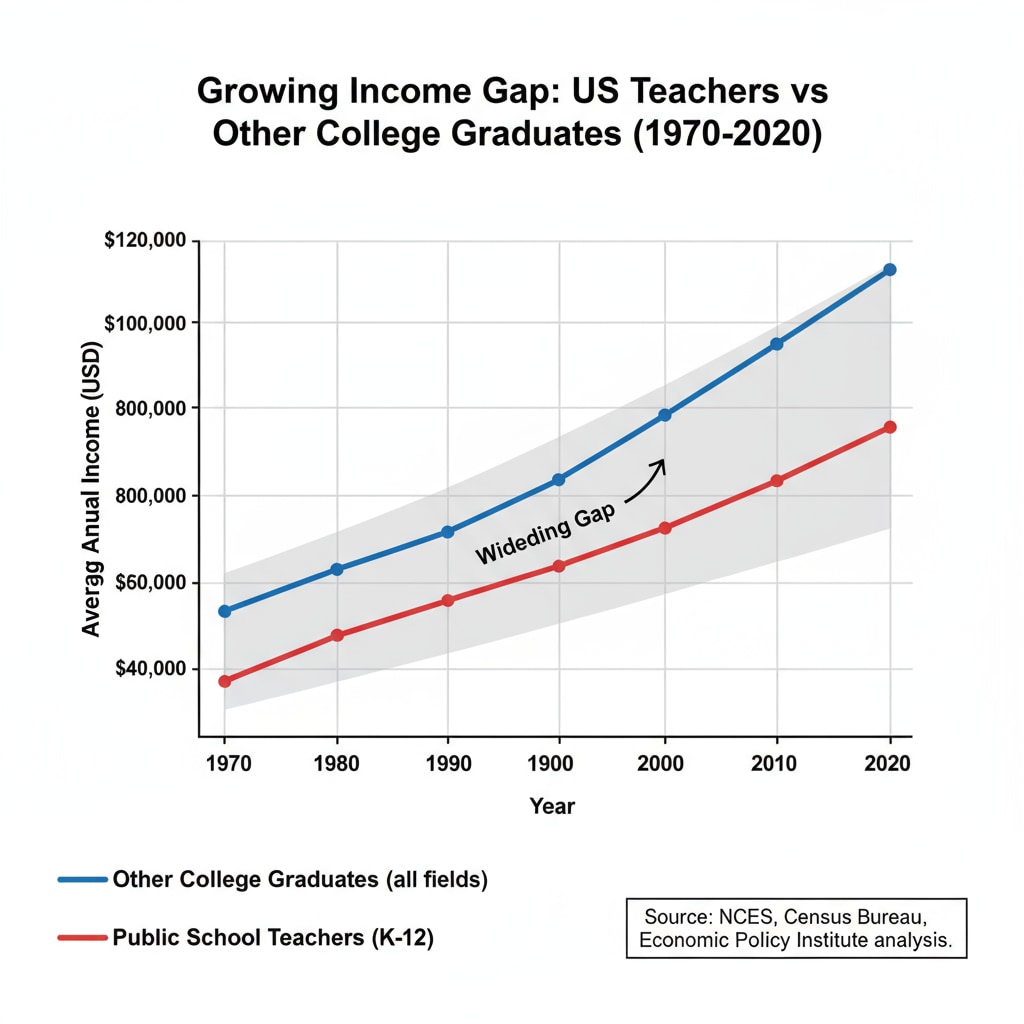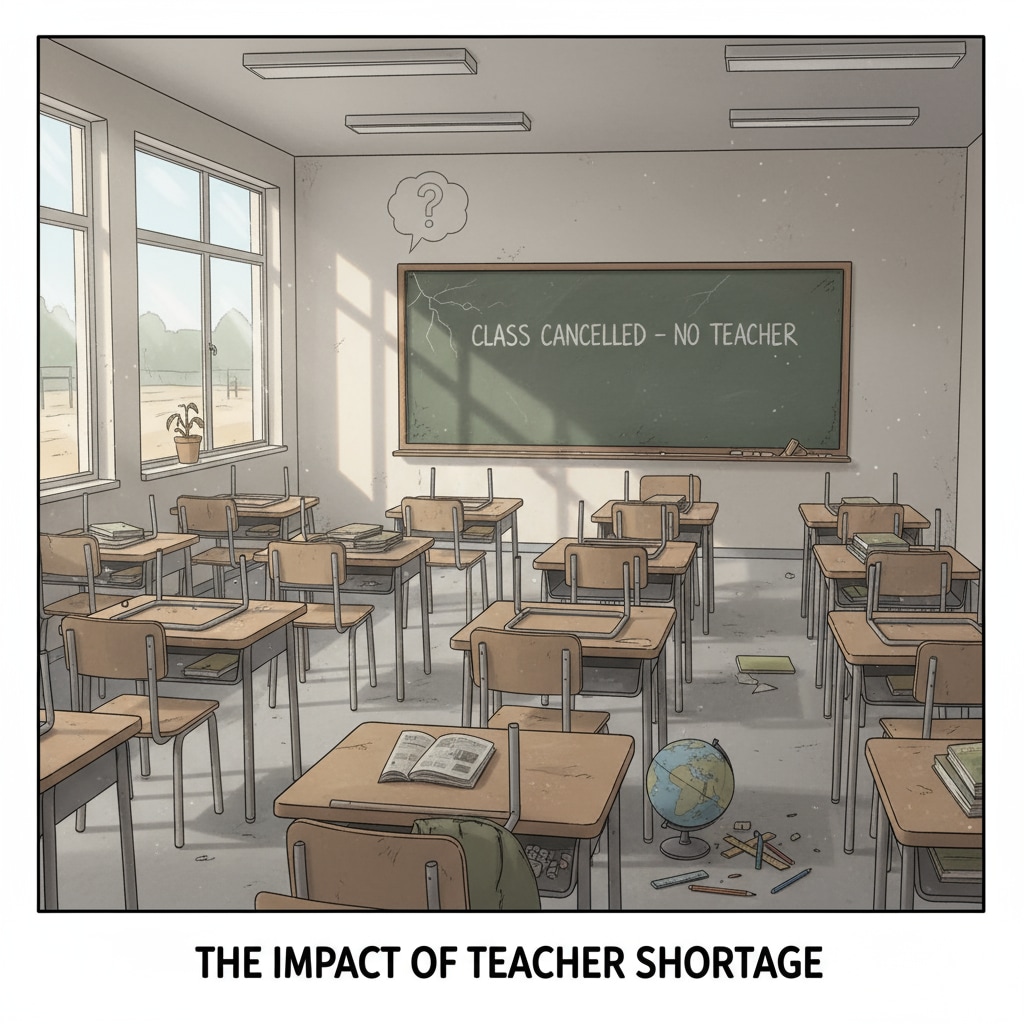The issue of teacher salaries, income gap, and teacher shortage in the United States has become a pressing concern in recent years. The income divide between teachers and other college graduates is steadily growing, posing a significant threat to the quality and sustainability of the education system.

The Widening Income Gap
In 2024, teachers’ salaries in the US were only 73% of those of professionals with the same educational qualifications. This disparity has been persistent over the past three decades. For example, while a software engineer with a bachelor’s degree may earn a significantly higher salary than a teacher with the same degree. This wage inequality is a major contributing factor to the growing dissatisfaction among teachers. Data on teacher salaries from the National Center for Education Statistics
Impact on Teacher Shortage
The ongoing income gap is at the heart of the teacher shortage crisis. Young college graduates are less likely to choose teaching as a profession when they see the significant difference in earnings compared to other fields. As a result, many schools are struggling to fill teaching positions. For instance, in some rural areas, the shortage is even more acute. The National Education Association’s report on teacher shortage

The consequences of this teacher shortage are far-reaching. Students may not receive the individualized attention they need, and the overall quality of education may decline. Moreover, it can lead to increased stress on the remaining teachers, who have to take on additional responsibilities.
Readability guidance: The paragraphs are short to convey information clearly. The use of examples helps to illustrate the points. Transition words like “for example” and “as a result” are used to make the flow smooth. The two images are placed at relevant positions to enhance understanding.


